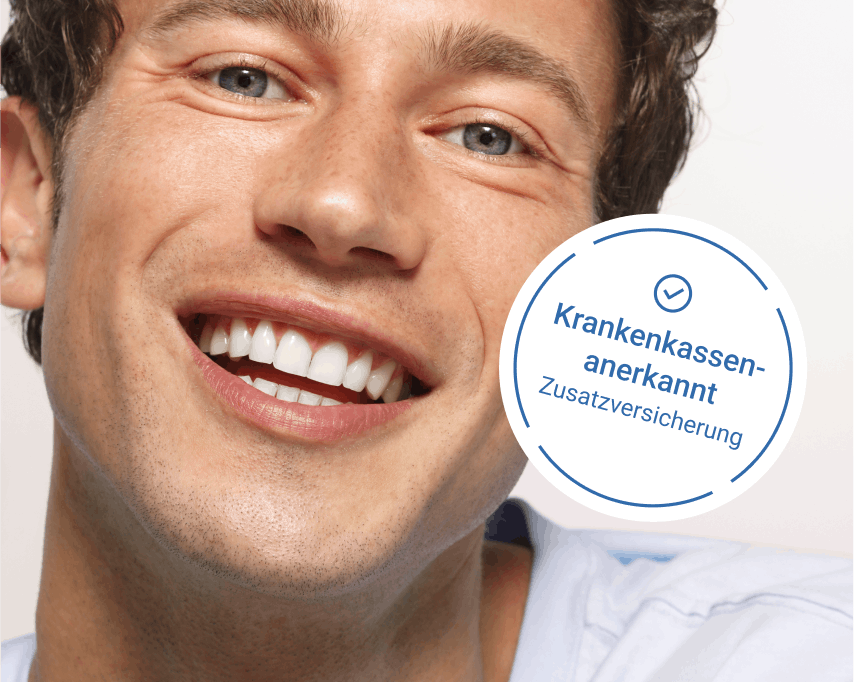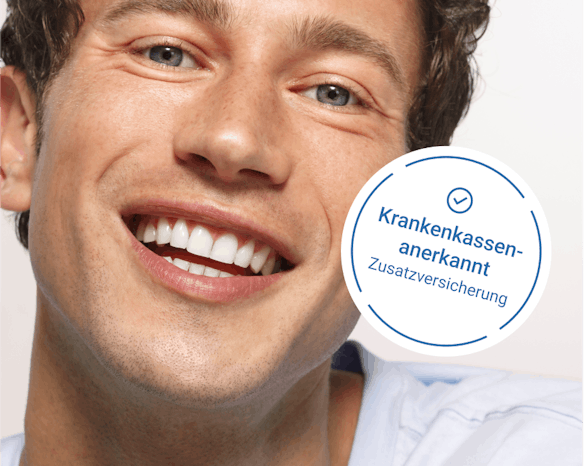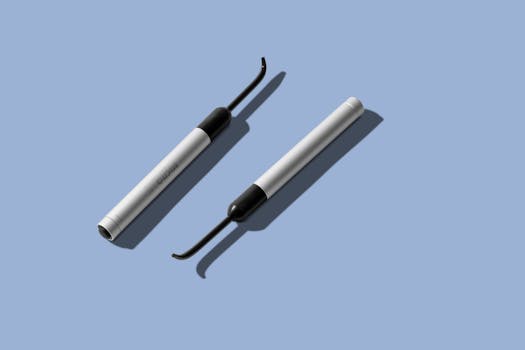130 Dental hygiene statistics: a global overview
Many people wait too long to address their dental hygiene issues, often seeking help when it's almost too late. Luckily, over the last three years, we've been able to help with a variety of dental issues. Our products are designed to help with teeth whitening, cleaning, and colour correction. We know that having the right information can make a big difference, especially when it comes to your health. That's why we've put together a list of the most important dental hygiene statistics. These insights will give you a clearer picture of oral health today. Here are our top findings, some of which may be surprising.



- Dental hygiene statistics key takeaways
- Global dental hygiene awareness statistics
- Pediatric dental hygiene statistics
- Adolescent dental hygiene statistics
- Adult dental hygiene statistics
- Tooth brushing frequency statistics
- Dental hygiene products usage statistics
- Dental cleaning statistics
- Dental hygiene treatment costs statistics
- Frequently Asked Questions
- Wrapping Up
Dental hygiene statistics key takeaways
- Globally, about 45% of people have oral diseases.1
- Every year, the U.S. loses more than $45 billion in work because people are out with dental problems that haven't been treated.19
- In the UK, 2 million adults need to travel over 40 miles just to get dental care.3
- About 29% of people worldwide have cavities in their permanent teeth, with over 2 billion cases reported.1
- For those over 60, about 22.7% of people worldwide don't have any teeth left. This means nearly 1 in 4 people in this age group are without teeth.1
- When a group of young people were asked where they learned how to brush their teeth, 60% reported that they were taught exclusively by their parents.5
- Baby teeth can start getting cavities as soon as they come in. The most cavities are often seen around the age of 6.1
Global dental hygiene awareness statistics
Many oral health issues can be stopped before they start and are treatable when caught early. The most common problems include tooth decay, gum diseases, losing teeth, and mouth cancers. There are also other significant oral health concerns like cleft lips and palates, noma (a severe disease that begins in the mouth and mainly affects children), and injuries to the mouth and teeth.


For a healthy mouth and beautiful teeth, regular professional teeth cleaning is essential. Our specialists detect early signs of caries and prevent them.
- Personalised dental hygiene
- Gum check & caries control
- Painless cleaning with AIRFLOW
- In 2019, the most common tooth problem was untreated cavities in permanent teeth, affecting about 2 billion people. Next was severe gum disease, with around 1 billion cases. Cavities in baby teeth came third, with around 510 million cases, and missing all teeth was fourth, affecting 350 million people.1
- Globally, there are about 1 billion more cases of oral diseases than the total cases of the five main non-communicable diseases (mental disorders, heart diseases, diabetes, chronic lung diseases, and cancers) put together.1
- Three out of four people with oral health issues come from countries with lower to middle incomes. Meanwhile, 16% are in wealthier countries, and 9% are in the poorest nations.1
Main causes of dental issues
Eating too much sugar1, using any kind of tobacco1, and drinking harmful amounts of alcohol1 are big health problems for many chronic diseases. These habits are also the main preventable causes of dental problems.
- Research has shown that sugar plays a big part in causing tooth decay. Because of this, the WHO Sugars Guideline suggests eating less sugar, recommending that only less than 10% of your daily calories should come from added sugars. They even say it's better if you can cut it down to 5% for extra dental health benefits.1
- Using any type of tobacco greatly increases the risk of cancer in the mouth and lips.1
- Drinking too much alcohol can cause over 200 health problems, including injuries, stomach issues, heart diseases, and other non-communicable diseases (NCDs), as well as mouth diseases like cancer of the lip and oral cavity.1
In 2019, people around the world spent $387 billion on dental diseases, which is about $50 for each person across 194 countries. This spending made up almost 5% of all health expenses globally. Also, dental diseases caused a loss in work productivity worth about $42 for every person, adding up to $323 billion worldwide.1
Stopping oral diseases early can save a lot of trouble and money. Most problems happen in poorer countries, but everyone's at risk. Eating less sugar, not using tobacco, and drinking less alcohol can help prevent these issues. Worldwide, we spend a lot on dental care and it even affects work. Making small changes in our daily habits can make a big difference in our health and wallet.
Cavities and the cost of dental care
- In the 28 countries of the European Union, people usually pay more than 60% of their dental treatment costs themselves. In some countries, this number can be as high as 100% because dental care isn't covered by health insurance.1
- Over a third of people worldwide have cavities that haven't been treated.1
- About 29% of people worldwide have cavities in their permanent teeth, with over 2 billion cases reported.1
- Middle-income countries account for 75% of the cases where cavities in permanent teeth are not treated.1
- Around the world, about 7% of people have lost all their teeth, adding up to over 350 million cases globally.1
- In 2020, the IARC Global Cancer Observatory (GLOBOCAN) reported about 378,000 new cases and around 178,000 deaths from cancers of the lip and oral cavity worldwide.1
- Lip and oral cavity cancers were the 16th most common type of cancer for both men and women in 2020.1
When you add in oropharyngeal cancers, they move up to the 13th most common cancer worldwide.1
Cancer of the lip and mouth is the 11th most common type of cancer in men of all ages, making up 3.5% of all cancers.1
- In the South-East Asia Region, 52% of all deaths are caused by oral cancer.1
- In the UK, 2 million adults need to travel over 40 miles just to get dental care.3
- In 2021, Chile and Mexico led the way in Latin America by importing the most dental and oral hygiene products.4
- Chile brought in products worth $76.1 million, while Mexico's imports were valued at $68.8 million. Colombia, Ecuador, and Peru also spent a lot on these products, making them top importers in the region.4
- In Switzerland, however, the money made from selling oral care products is expected to hit $275.50 million in 2024. The market is expected to grow by 1.70% each year from 2024 to 2028.21
- Comparatively, the United States leads the world in oral care market earnings, bringing in $10,080 million in 2024.21
- For each person in Switzerland, it's expected that $31.12 will be made in 2024 from the dental care market. 21
In Switzerland, more people are looking for natural and eco-friendly dental products. This shows how much they care about being healthy and protecting the environment.21
Taking good care of our teeth early helps us stay healthy and save money. Simple steps like eating less sugar, not using tobacco, and drinking less alcohol make a big difference. Dental care is expensive worldwide, but small changes can help everyone save. Alpine White's studios in Switzerland are working to make dental care easier to get, showing how important it is to look after our oral health.
Pediatric dental hygiene statistics
Caring for kids' teeth is more than just brushing and flossing—it's about starting a lifetime of good habits. Surprisingly, even very young children can face dental challenges, making early attention important.
Different age groups are affected by oral diseases in unique ways.
- Baby teeth can start getting cavities as soon as they come in. The most cavities are often seen around the age of 6.1
- Untreated cavities often lead to problems for kids and teenagers, like infections, toothaches, and discomfort.1
- If a child's cavities aren't treated, it can make it hard for them to eat, talk, learn, and sleep properly.1
Bad cavities can also impact a child's nutrition, growth, and weight. Plus, a toothache can cause them to miss school, which can lead to not doing as well in their studies.1
In many wealthy countries, the most common reason young children end up in the hospital is to have decayed teeth removed under general anesthesia.1
- In baby teeth, cavities that are not treated are the most common long-term illness among kids, impacting 514 million children globally.1
- On average, about 43% of young children worldwide have tooth decay in their baby teeth.1
- Also, in 134 out of 194 countries that are part of the World Health Organization, more than 40% of children are affected by this issue.1
The American Academy of Pediatrics agrees with this statement. They say:
- More than 40% of kids aged 2 to 19 years old have dental cavities.2
- In the US, 23% of kids aged 2 to 5, 52% of kids aged 6 to 8, and 57% of young people aged 12 to 19 have cavities.2
- Cutting down on how much and how often you eat sugary foods and staying away from sugary drinks and juices can lower the risk of tooth decay.2
- Doctors can suggest that kids drink only water, especially water with fluoride, between meals. They also recommend not giving babies under 1 year old any juice, and for kids aged 1 to 3, keeping juice to no more than 4 ounces/113 grams a day.2
- Kids between 4 to 6 years old should have no more than 4 to 6 ounces/113 to 170 grams of juice a day.2
- Pediatricians can suggest that parents or caregivers help and watch over their kids' tooth brushing until they get the hang of it, which is usually by the time they turn 10 years old.2
Starting good dental habits early is important for preventing cavities in children. With over 40% of kids worldwide experiencing tooth decay, reducing sugary foods and drinks, ensuring fluoride intake, and supervising brushing until children are able are essential steps.
This approach helps in significantly reducing dental problems and highlights the importance of early and preventive care for a child's health and well-being.
Adolescent dental hygiene statistics
Taking care of teeth is super important for teenagers because it affects their health now and in the future. Good habits can prevent problems later on, such as cavities and tooth decay, gum disease, bad breath, misaligned teeth, dental erosion and sensitivity.
- Cavities in permanent teeth usually start increasing quickly after the teeth come in. They hit their highest point in late teens and early twenties and then stay about the same for the rest of a person's life.1
- Cavities in permanent teeth are the most common health problem, impacting over 2 billion people globally.1
- A lot of people have serious gum disease. Around 19% of those over 15 years old are affected by it, which means more than 1 billion people worldwide have this condition.1
- On average, kids miss 3 days of school each year because of dental issues.3
According to a 2022 questionnaire-based study in the National Library of Medicine about ‘Oral Hygiene in Adolescence,’ they found that:
- 97% of people said they've visited a dentist at least once. When asked when their first visit was, 61% shared it was when they were between 5 and 9 years old.5
- 97% of people said they've visited a dentist at least once. Over 80% brush their teeth twice daily, but just 7% floss every day.5
About half of the people surveyed said they regularly clean their tongues.5
This research also noticed that teens with braces tend to have better oral hygiene habits at home compared to those without. This is likely because they visit the dentist more often.5
- However, the number of teenagers who floss regularly is still quite low: just 10% of girls with braces make it a habit to floss daily.5
- The survey revealed insights into individuals' awareness and experience with professional dental cleanings: 79% of participants were familiar with what these cleanings entail, and 67% had undergone at least one professional dental cleaning session in their lives.5
- But, there's a special focus on how professional dental cleaning and braces work together. Interestingly, 46% of teens with braces didn't get this extra cleaning help.5
- When a group of young people were asked where they learned how to brush their teeth, 60% reported that they were taught exclusively by their parents.5
- The research also indicates that teenagers value their oral health, as 75% of the participants expressed an interest in acquiring more information on the topic.5
Let’s take a look at this case study that shows how wearing braces can help teenagers take better care of their teeth.
This study looks at a 15-year-old boy who started his dental treatment when he was 11 and a half years old. His mom was worried about the way his front teeth looked; they seemed too big and stuck out more than they should.
Image 1: Pre-treatment (Source: Dental Care Case Studies)
When they checked him out, they didn't find anything unusual. They did notice that his upper jaw stuck out a bit more than his lower jaw, a common issue called Class II, Division I malocclusion, but his gums and teeth were healthy.
He went to an orthodontist for braces and the care he takes of his teeth are much better than teenagers without braces.
- He sees his dentist regularly and has had three fillings.
- He's good at taking care of his teeth, brushing three times a day with an electric toothbrush and toothpaste with fluoride.
After his braces were taken off, his gums bled a lot, about 66% of the time, which is more than normal and shows his gums are quite sore due to not being cleaned well with braces on. Having plaque on 25% of teeth is a bit expected after braces, especially in hard-to-clean spots, but it's still important to aim for much less plaque, ideally under 10%.
They also found some leftover glue on his back teeth from the braces. Cleaning these areas well is key to avoiding more plaque and keeping his teeth healthy.
Image 2: (Source: Dental Care Case Studies)
Dental health is a big issue, affecting billions. While most teenagers see dentists and brush regularly, flossing and professional cleanings are less common. Orthodontic treatment seems to improve hygiene habits, but gaps in knowledge and practice remain. Improving education on oral care from a young age is important.
Adult dental hygiene statistics
Many adults overlook their dental hygiene, yet it plays an important role in overall health. Statistics show that regular brushing and dental check-ups can prevent common diseases.
- Severe gum disease mostly happens in middle-aged people, and it's most common around age 60. Losing all teeth gradually becomes more common as people get older, with the highest rates seen in the elderly.1
- Often beginning in the late teenage years, severe gum disease reaches its peak around the age of 55 and remains prevalent into older age. It affects both men and women at nearly equal rates.1
- The CDC also reports that almost half (46%) of adults over 30 have some form of gum disease, and around 9% suffer from serious gum problems.6
- For those over 60, about 22.7% of people worldwide don't have any teeth left. This means nearly 1 in 4 people in this age group are without teeth.1
- However, according to the CDC, fewer adults aged 20-64 are losing all their teeth now compared to before, but not everyone is seeing this improvement.6
Adults often forget how important their teeth are for overall health. Not taking care of teeth can lead to serious gum diseases, especially as people get older. Fewer young adults are losing all their teeth these days compared to the past—which is good—but not everyone is benefiting equally from this improvement.
- Nearly 4 out of 10 adults don't visit the dentist as often as they should.3
- Two out of every three adults (66%) show signs of plaque on their teeth.3
- One out of every four adults doesn't brush their teeth twice a day using toothpaste with fluoride.3
- About 31% of adults have cavities.3
- About 74% of adults have had at least one tooth pulled out.3
- One out of every three adults (33%) has never used floss or cleaned between their teeth.3
- Even though more adults are managing to keep their teeth these days, a lot still need dental care.6
This is especially true for certain groups—around 75% of Hispanic and Black adults haven't gotten the dental treatment they need. People earning less money face the same issue.6
- Also, many adults find it hard to get dental care. For every adult over 19 without health insurance, three don't have dental insurance.6
- Over a quarter (26%) of adults in the U.S. have cavities that haven't been treated.6
- Adults with lower incomes, less education than high school, who are non-Hispanic Black, or who smoke regularly are twice as likely to have cavities that haven't been treated compared to other groups.6
- More adults who have less money and smoke (6%) have lost all their teeth compared to around 1% of people with more money or who have never smoked.6
- Mouth cancer is mainly found in adults over 55, especially in those who smoke a lot and drink heavily.6
Taking care of our teeth is really important for overall health. Even though more people are keeping their teeth as they get older, not everyone gets the dental care they need, especially people with less money or in certain racial groups.
We need to make sure everyone can get to the dentist and learn about taking care of their teeth, so we can all have healthier smiles.
Tooth brushing frequency statistics
Brushing teeth regularly is a key part of keeping your mouth healthy, but not everyone follows the advice to brush twice a day. This habit is essential for fighting off cavities and gum disease, yet practices vary among different age groups, affecting their dental well-being.
Staying consistent with brushing helps to keep plaque at bay and avoid tooth decay, highlighting the need to make it a part of our daily habits for better oral health.
- In a study on how often French teenagers brushed their teeth from 2006 to 2014 showed more teens started brushing twice a day. In 2006, about 66.8% brushed twice daily. This number went up to 68% in 2010 and jumped to 78.8% by 2014.7
Boys' tooth brushing habits don't change much with age, but as girls get older, they tend to brush their teeth more often.7 This might be because of how boys and girls are taught about personal care.
- In the 2014 study, the gap in better brushing habits between older and younger girls got smaller. This was because the number of younger girls (11 years old) who brushed their teeth twice a day rose quicker (by 11.4% from 2010 to 2014) compared to the older girls (15 years old), who saw a smaller increase of 9.3% in the same time.7
- In all three studies (2006, 2010, and 2014), being a girl, especially an older one, was the key factor linked to better brushing habits. About 10% more girls than boys brushed their teeth twice a day.7
- Eating healthy foods like fruits, vegetables, or having breakfast every day was linked to more students brushing their teeth twice a day. Specifically, eating fruit led to a 10% rise in students who brush twice daily.7
- For teenagers who didn't have their BMI recorded, 67.2% brushed their teeth twice a day.7
- The BMC agrees that a similar trend occurs in kids: About 65% of kids brush their teeth twice a day or more, but 35% of kids only brush once a day or even less.8
- This rate falls between those considered to be of normal weight (72.6% brush twice a day) and those who are overweight or obese (59.6%). So, it was guessed that the missing information could be from both normal weight and overweight or obese teenagers in equal measure.7
- In the study, two things stood out:
- Eating breakfast (adjusted odds ratio 1.38, with a 95% confidence interval of 1.29-1.48).7
- Having fruits every day (adjusted odds ratio 1.52, with a 95% confidence interval of 1.41-1.64) were the top behaviors linked to brushing teeth twice a day.7
Also, kids who ate more chocolate every day were not as good at brushing their teeth twice daily.8
- In the same study on health and body, being overweight (with odds of 0.65 and a confidence interval of 95% from 0.58 to 0.73) was linked to brushing teeth less often.7
- On the other hand, people who felt they were in excellent health (with odds of 1.30 and a confidence interval of 95% from 1.21 to 1.41) were more likely to brush their teeth frequently.7
- Having supportive classmates and good grades was linked to positive habits like brushing teeth twice a day. On the other hand, falling behind in schoolwork or being involved in bullying, whether as the bully or the victim, was linked to not brushing teeth twice a day.7
- Apart from having supportive classmates, the BMC reports that parents who felt good about adding fluoride to water were much more likely (74% more likely, to be exact) to have kids who brushed their teeth at least twice a day.8
- Kids with private dental insurance were twice as likely to brush their teeth two or more times a day.8
- However, children living with one parent were 34% less likely to brush their teeth twice a day compared to kids living with both parents.8
- Kids were less likely to brush their teeth twice a day if their moms had poor dental health, especially if their moms had lost any teeth. In fact, these kids had a 7% lower chance of brushing their teeth regularly.8
There is a link between good brushing habits and lifestyle choices among youth. Girls tend to brush more often than boys, especially as they grow older. Healthy eating habits, like eating fruits and having breakfast, also lead to better brushing routines.
This suggests that improving overall health and lifestyle choices could encourage better dental hygiene practices among young people.
Dental hygiene products usage statistics
Brushing our teeth is more than just a daily routine; it's a global habit that shapes our health and economy. Surprisingly, the products we use to keep our smiles bright reveal much about our lifestyle and environmental choices.
- In 2020, over 78 million people in the U.S. used dental floss, flossers, or picks at least 8 times.9
- In the same year, over 83 million people in the U.S. used Oral-B Glide.10
- Additionally, in 2020, 1.62 million Americans used Biotene mouthwash or dental rinse at least 8 times in a single week.12
- In 2020, approximately 740,000 people in the United States used Cepacol mouthwash or dental rinse a minimum of eight times over the course of a week.13
- In 2020, approximately 199.6 million individuals in the U.S. used mouthwash or dental rinse, with projections indicating an increase to more than 202.6 million by 2024.11
- Sales of hygiene and beauty products in Latin America went up by 12% from 2002 to 2003, while the worldwide increase was about 2%.14
- From 1992 to 2002, people started using a lot more dental care products. Toothpaste use went up by 38.3%, toothbrushes by 138.3%, mouthwash by a huge 618.8%, and dental floss by 177.2%.14 The surge in dental product use during 1992-2002 likely resulted from increased oral health awareness and improved product technology and marketing.
- In 2004, Brazil sold five times more oral health products than Argentina. However, from 2003 to 2004, Argentina's sales grew eight times more than Brazil's sales did.14
Based on unpublished data by Colgate-Palmolive, toothpaste is found in almost every home in Brazil, with a presence in 99.9% of households.14
- On average, each person in Brazil uses 1.67 toothbrushes a year, goes through 126 milliliters of mouthwash, and uses 18.8 meters of dental floss. This amounts to using about 5.1 centimeters of dental floss every day.14
Looking at the numbers, we see that toothbrush use went up from 1.12 in 2002 to 1.67 in 2009.14 This generic trend in toothbrush use is good news. It suggests that more people are paying attention to their dental health, which is a positive change.
- From 2002 to 2006, the market for oral care products in Brazil grew, reaching sales of about $746.1 million.14
- In 2006, toothpaste made up 66% of sales, dental floss was 21%, mouthrinse was 9%, and toothbrushes were 4%.14
- In accordance with these statistics, the Semantic Scholar reports on the usage habits of oral hygiene products during Covid-19. They found that people agree oral care products can help lessen the impact of the COVID-19 pandemic. However, when picking these products, reducing the spread of the virus isn't the main concern.15
- Over half of the people they talked to, 51.2% to be exact, think using mouthwash has become more important after the pandemic. Yet, 59.4% said they haven't changed how much or what kind of mouthwash they use because of it.15
That’s equally as impressive as our very own Alpine White CEO & Co-Founder’s product success story.
In an interview with LEXR, Reto Wälchli says: “We then came across the ingredient PAP – this has been around since the 1980s but had not caught on due to the complexity of its stability. After two years of self-testing on our own teeth and many discussions with experts, we launched our first product, Whitening Strips, at the end of 2016, and the rest is history.” Wälchli goes on to add that “One product turned into seven, a small print run in Switzerland turned into a large distribution throughout the DACH region.”
In our community tests, we shared 18,000 Whitening Strips samples with people. From those, we got back more than 1,300 responses. Here's what they thought:
- Did they like it? 84% said yes.
- Was it easy on their teeth? 88% said yes.
- Were they happy with the whitening results? 76% said yes.
More people are taking care of their teeth than before. Alpine White makes teeth-whitening strips that follow rules and work well, as many users have said. This is a big step in how we look after our teeth, with Alpine White leading with new ideas.
Dental cleaning statistics
A Prosthodontist from the American College of Prosthodontists (ACP) says, “As a Prosthodontist, I know that brushing regularly for 2 minutes, twice a day and flossing once a day will dramatically reduce the number of Americans missing one or more teeth down from 178 million to far fewer people.”
- Only 13.5% of people in the US floss daily, even though it's an easy step to stop bacteria from building up, along with brushing your teeth every day.16
- With this in mind, Link Springer (2013) notes that even though more people understand how important oral health is for their overall well-being, not many in the U.S. are going for regular dental check-ups.17
- This same study found that women who did not finish high school, have faced physical abuse, or are non-Hispanic black and Hispanic were less likely to say they cleaned their teeth before and during pregnancy.17
- Starting pregnancy without insurance was linked to a much lower chance of getting teeth cleaned before pregnancy and also lower during pregnancy.17
- Getting advice on oral health while pregnant is linked to more women cleaning their teeth during pregnancy.17
- The overall consensus in this 2013 study was that dental cleaning is linked to factors like insurance, advice on oral health, and maternal aspects including race, ethnicity, education, and past experiences of physical abuse.17
- Moreover, dental cleaning has a link between daily activities and an individual's tooth cleaning pattern.18
- The odds were 2.3 times higher for those with certain routines, with a confidence interval ranging from 1.34 to 3.92.18
- They found that cleaning teeth more often and better leads to improved outcomes and more flexibility in daily activities.18
- Specifically, frequent and thorough cleaning increased positive results by 60% and 170%, respectively, and better tooth cleaning outcomes were linked to a 130% increase in daily activity flexibility.18
To cut down tooth loss, it's important to brush, floss, and see the dentist often. Still, many don't follow through, even when they know it helps. Making dental care easier to get and teaching people based on their needs could really make a difference in keeping teeth healthy.
Dental hygiene treatment costs statistics
Taking care of oral diseases not only takes up time but also costs money. People of all ages, incomes, or insurance types often find it harder to afford dental care than any other health service.
- Every year, the U.S. loses more than $45 billion in work because people are out with dental problems that haven't been treated.19
- Also, kids miss over 34 million hours of school each year because they need emergency dental care.19
- In 2017, dental emergencies led to 2.1 million visits to the emergency room. For these visits, Medicaid covered roughly 69% of the costs for kids and about 40% for adults.19
Drinking water with fluoride makes teeth stronger and cuts down cavities by about 25% for both kids and adults.19
- In fact, supplying fluoridated water for one year can save about $6.5 billion in both direct and indirect dental treatment costs.19
- Once we factor in the costs of adding fluoride, towns that have fluoridated water end up saving about $32 for each person every year because they avoid having to treat cavities.19
- In places with at least 1,000 people, for every $1 spent on adding fluoride to water, there's an average return of $20.19
- Dental sealants can stop 80% of cavities in the back teeth, where most cavities happen, for up to 2 years after they're put on.19
- Sadly, fewer than 1 in 5 kids who are most likely to get cavities actually get sealants when they visit the dentist.19
- Programs in schools that put sealants on the teeth of students who are more likely to get cavities can start saving money in just 2 years. Over 4 years, they can save over $11 for each tooth they seal.19
- Giving sealants to about 7 million kids from families with less money could help save up to $300 million in dental treatment costs that wouldn't be needed.19
- In accordance with this, a 2019 study published by the NCBI found that advice from oral health therapists, given over phone calls to parents of 1-year-old children for about five and a half years, saved $108,406.92 in 2012.20
- A 2006 study reported by NCBI looked into how cost-effective it is for doctors to apply fluoride varnish. They compared the number of months without cavities: 31.49 months for the group that got the treatment and 29.97 months for the group that didn't.20
- In terms of money, the treatment cost $181.66 per person in 2003, while the cost for those who didn't get it was $170.73. So, the extra cost for the treatment was $10.93 per person in 2003.20
- A different study looked at how cost-effective it was to have preventive dental care in medical offices. They found it was a good deal in terms of money. The program cost $54.81, which is cheaper than the usual cost of $285.8. This means they saved $33.64 in 2006 by using this program.20
- A study found a national tooth-brushing program saved about $197 per prevented tooth issue in 2009, totaling savings of $6.9 million. It suggests this program could notably cut costs for children in less wealthy areas.20
- Another study evaluated a tooth decay management program for young children, finding it cost-effective. The program reduced decay rates to 4.15% from 22.5% in a control group, saving $8,380 and an additional $904 in 2011. This suggests the program can significantly lower healthcare costs.20
- Another study looked at how a program to prevent tooth decay in young kids worked and what it cost. Kids who were part of the program had fewer cavities than those who weren't, but the program was more expensive, costing an extra $167.61 in 2015.20
Investing in preventive dental care like fluoride treatment and sealants saves a lot of money and improves health. These steps help avoid expensive treatments later and reduce dental disease costs significantly. This approach is not only smart for our wallets but also for our well-being, showing that a little prevention goes a long way in healthcare.
Frequently Asked Questions
- What are some important statistics about dental hygiene?
- 25% of Americans don't brush their teeth twice a day!
- Those two-minute recommended brushing sessions really add up.
- There's more bacteria in your mouth than human beings on planet Earth.
- People tend to prefer blue toothbrushes over red ones.
- What is the most challenging aspect of dental hygiene?
Patients who feel anxious or have oral pain may be less cooperative with the hygienist. Working with children, patients with special needs or dental sensitivity can also make the work of a hygienist more challenging.
- What are common dental hygiene issues?
Some of the most common diseases that impact our oral health include cavities (tooth decay), gum (periodontal) disease, and oral cancer.
- What does poor dental hygiene lead to?
Plaque buildup and loss of teeth are just the beginning for people who don't practice good oral health. You can also experience mouth sores, gingivitis, and halitosis. Periodontal disease is also a distinct possibility if you don't take care of your teeth and gums.
- What is poor dental hygiene responsible for?
Poor oral hygiene can increase your risk for cardiovascular diseases such as endocarditis.
Wrapping Up
At Alpine White, we're all about making your teeth healthier and brighter with our life-changing products. We've been working on this for over three years and have learned a ton about how to keep smiles shining. We want everyone to know how important it is to start taking care of your teeth early to avoid bigger problems later.
But there’s more to it–we want to give you all the tips and tricks to keep your smile shining. Together, let’s focus on keeping those teeth in top shape because a great smile is something everyone should have!
Sources
- “Global oral health status report: towards universal health coverage for oral health by 2030” (2022), [available at https://www.who.int/publications/i/item/9789240061484].
- Krol, David and Kaitlin Whelan, “Maintaining and Improving the Oral Health of Young Children,” Pediatrics, (2022) [available at https://publications.aap.org/pediatrics/article/151/1/e2022060417/190307/Maintaining-and-Improving-the-Oral-Health-of-Young?autologincheck=redirected].
- “Oral health statistics in the UK” Oral Health Foundation, [available at https://www.dentalhealth.org/oral-health-statistics].
- “Latin America: import value of oral and dental hygiene products 2022, by country” (2024), Statista, [available at https://www.statista.com/statistics/917501/latin-america-dental-care-products-imports-value-country/].
- Sbricoli L, Bernardi L, Ezeddine F, Bacci C, Di Fiore A. “Oral Hygiene in Adolescence: A Questionnaire-Based Study,” Int J Environ Res Public Health, (2022) [available at: https://www.ncbi.nlm.nih.gov/pmc/articles/PMC9223832/].
- “Adult Oral Health | Basics | Division of Oral Health | CDC” [available at https://www.cdc.gov/oralhealth/basics/adult-oral-health/].
- De Grado, Gabriel Fernandez, Virginie Ehlinger, Emmanuelle Godeau, Catherine Arnaud, Cathy Nabet, Nadia Benkirane‐Jessel, Anne‐Marie Musset, and Damien Offner, “Changes in tooth brushing frequency and its associated factors from 2006 to 2014 among French adolescents: Results from three repeated cross sectional HBSC studies,” PLOS ONE, (2021) [available at https://journals.plos.org/plosone/article?id=10.1371/journal.pone.0249129].
- Arora, Amit, Subrat Nargundkar, Paul Fahey, Hema Joshua, and James Rufus John, “Social determinants and behavioural factors influencing toothbrushing frequency among primary school children in rural Australian community of Lithgow, New South Wales,” BMC Research Notes, (2020) [available at https://bmcresnotes.biomedcentral.com/articles/10.1186/s13104-020-05239-3].
- “Usage frequency of dental floss/flossers/picks in the U.S. 2011-2020” (2024), Statista, [available at https://www.statista.com/statistics/285873/usage-frequency-of-dental-floss-flossers-picks-in-the-us-trend/].
- “Brands of dental floss / flossers / picks used most often in the U.S. 2011-2020” (2024), Statista, [available at https://www.statista.com/statistics/318626/brands-of-dental-floss-flossers-picks-used-most-often/].
- “Usage of mouthwash / dental rinse in the U.S. 2011-2024” (2024), Statista, [available at https://www.statista.com/statistics/286902/usage-mouthwash-dental-rinse-us-trend].
- “Usage frequency of Biotene mouthwash / dental rinse in the U.S. 2020” (2024), Statista, [available at https://www.statista.com/statistics/289636/usage-frequency-of-biotene-mouthwash-dental-rinse-in-the-us/].
- “Usage frequency of Cepacol mouthwash / dental rinse in the U.S. 2020” (2024), Statista, [available at https://www.statista.com/statistics/934073/usage-frequency-of-cepacol-mouthwash-dental-rinse-usa/].
- Jardim, Juliana Jobim, Luana Severo Alves, and Marisa Maltz (2009), “The history and global market of oral home-care products,” Brazilian Oral Research, [available at https://www.scielo.br/j/bor/a/NLF8R3RWvyCGJnZmbcvRtkk/?lang=en].
- Yilmaz, Cemile and Latife Altinok Uygun (2023), “EVALUATION OF THE USAGE HABITS OF ORAL HYGIENE PRODUCTS DURING THE COVID-19 EPIDEMIC PERIOD,” [available at https://www.semanticscholar.org/paper/EVALUATION-OF-THE-USAGE-HABITS-OF-ORAL-HYGIENE-THE-Yilmaz-UYGUN/cd54b9468419a9cb3807511530614e40f3ffe0cd].
- The American College of Prosthodontists (n.d.), “Missing Teeth,” https://www.prosthodontics.org, [available at https://www.prosthodontics.org/assets/1/7/ACP_Talking_points_for_Missing_Teeth_1-12-15.pdf].
- Thompson, Terri Ann, Diana Cheng, and Donna M. Strobino (2012), “Dental Cleaning Before and During Pregnancy Among Maryland Mothers,” Maternal and Child Health Journal, [available at https://link.springer.com/article/10.1007/s10995-012-0954-6].
- Abegg, C., Croucher, R., Marcenes, W.S. and Sheiham, A. (2000), How Do Routines of Daily Activities and Flexibility of Daily Activities Affect Tooth-cleaning Behavior?. Journal of Public Health Dentistry, 60: 154-158. [available at https://onlinelibrary.wiley.com/doi/10.1111/j.1752-7325.2000.tb03321.x].
- “The High Cost of Oral Disease” [available at https://www.cdc.gov/oralhealth/publications/features/the-high-cost-of-oral-dis.html].
- Fraihat N, Madae'en S, Bencze Z, Herczeg A, Varga O. Clinical (2019) “Effectiveness and Cost-Effectiveness of Oral-Health Promotion in Dental Caries Prevention among Children: Systematic Review and Meta-Analysis.” Int J Environ Res Public Health. [available at https://www.ncbi.nlm.nih.gov/pmc/articles/PMC6696287].
- “Oral Care - Switzerland | Statista Market Forecast”, Statista, [available at https://www.statista.com/outlook/cmo/beauty-personal-care/personal-care/oral-care/switzerland].
- “Dental care: benefits of cleaning between teeth in the United Kingdom 2016” (2018), Statista, [available at https://www.statista.com/statistics/549313/benefits-of-cleaning-between-teeth-united-kingdom/].
- “Adults and children visiting dentist by insurance status U.S. 2022 | Statista” (2023), Statista, [available at https://www.statista.com/statistics/1310325/consumers-visiting-the-dentist-by-insurance-coverage-status-us/].


